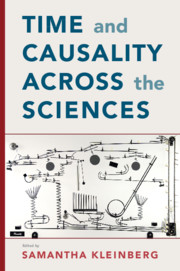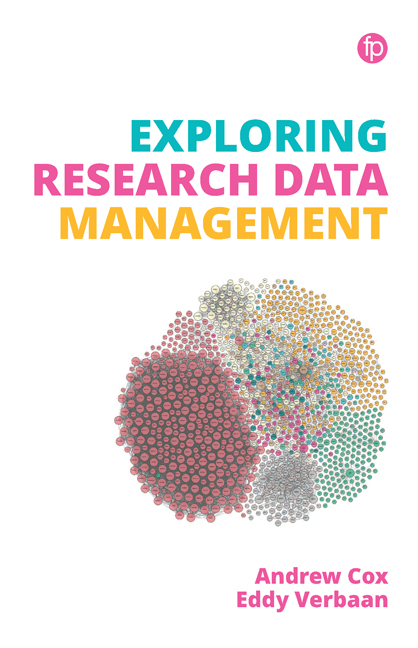Refine search
Actions for selected content:
48274 results in Computer Science
3 - The Direction of Causation
-
- Book:
- Time and Causality across the Sciences
- Published online:
- 24 September 2019
- Print publication:
- 26 September 2019, pp 37-48
-
- Chapter
- Export citation

Time and Causality across the Sciences
-
- Published online:
- 24 September 2019
- Print publication:
- 26 September 2019
SOME LIMIT THEOREMS OF DELAYED AVERAGES FOR COUNTABLE NONHOMOGENEOUS MARKOV CHAINS
- Part of
-
- Journal:
- Probability in the Engineering and Informational Sciences / Volume 35 / Issue 2 / April 2021
- Published online by Cambridge University Press:
- 24 September 2019, pp. 297-315
-
- Article
- Export citation
EndNote: Feature-based classification of networks
-
- Journal:
- Network Science / Volume 7 / Issue 3 / September 2019
- Published online by Cambridge University Press:
- 23 September 2019, pp. 438-444
-
- Article
- Export citation
Uncovering the language of wine experts
-
- Journal:
- Natural Language Engineering / Volume 26 / Issue 5 / September 2020
- Published online by Cambridge University Press:
- 23 September 2019, pp. 511-530
-
- Article
-
- You have access
- Open access
- HTML
- Export citation
Statistical evaluation of spectral methods for anomaly detection in static networks
-
- Journal:
- Network Science / Volume 7 / Issue 3 / September 2019
- Published online by Cambridge University Press:
- 23 September 2019, pp. 319-352
-
- Article
- Export citation
Transitivity correlation: A descriptive measure of network transitivity
-
- Journal:
- Network Science / Volume 7 / Issue 3 / September 2019
- Published online by Cambridge University Press:
- 23 September 2019, pp. 353-375
-
- Article
- Export citation
Values in adolescent friendship networks
-
- Journal:
- Network Science / Volume 7 / Issue 4 / December 2019
- Published online by Cambridge University Press:
- 23 September 2019, pp. 498-522
-
- Article
- Export citation
Bayesian dynamic modeling and monitoring of network flows
-
- Journal:
- Network Science / Volume 7 / Issue 3 / September 2019
- Published online by Cambridge University Press:
- 23 September 2019, pp. 292-318
-
- Article
- Export citation

Exploring Research Data Management
-
- Published by:
- Facet
- Published online:
- 21 September 2019
- Print publication:
- 11 May 2018
Control-Flow Refinement by Partial Evaluation, and its Application to Termination and Cost Analysis
-
- Journal:
- Theory and Practice of Logic Programming / Volume 19 / Issue 5-6 / September 2019
- Published online by Cambridge University Press:
- 20 September 2019, pp. 990-1005
-
- Article
- Export citation
Beyond NP: Quantifying over Answer Sets
-
- Journal:
- Theory and Practice of Logic Programming / Volume 19 / Issue 5-6 / September 2019
- Published online by Cambridge University Press:
- 20 September 2019, pp. 705-721
-
- Article
- Export citation
Evaluation of the Implementation of an Abstract Interpretation Algorithm using Tabled CLP
-
- Journal:
- Theory and Practice of Logic Programming / Volume 19 / Issue 5-6 / September 2019
- Published online by Cambridge University Press:
- 20 September 2019, pp. 1107-1123
-
- Article
- Export citation
Precomputing Datalog Evaluation Plans in Large-Scale Scenarios
-
- Journal:
- Theory and Practice of Logic Programming / Volume 19 / Issue 5-6 / September 2019
- Published online by Cambridge University Press:
- 20 September 2019, pp. 1073-1089
-
- Article
- Export citation
PES volume 33 issue 4 Cover and Front matter
-
- Journal:
- Probability in the Engineering and Informational Sciences / Volume 33 / Issue 4 / October 2019
- Published online by Cambridge University Press:
- 20 September 2019, pp. f1-f2
-
- Article
-
- You have access
- Export citation
Querying Knowledge via Multi-Hop English Questions
-
- Journal:
- Theory and Practice of Logic Programming / Volume 19 / Issue 5-6 / September 2019
- Published online by Cambridge University Press:
- 20 September 2019, pp. 636-653
-
- Article
- Export citation
Anti-unification in Constraint Logic Programming
-
- Journal:
- Theory and Practice of Logic Programming / Volume 19 / Issue 5-6 / September 2019
- Published online by Cambridge University Press:
- 20 September 2019, pp. 773-789
-
- Article
- Export citation
The Expressive Power of Higher-Order Datalog
-
- Journal:
- Theory and Practice of Logic Programming / Volume 19 / Issue 5-6 / September 2019
- Published online by Cambridge University Press:
- 20 September 2019, pp. 925-940
-
- Article
- Export citation
Bridging Commonsense Reasoning and Probabilistic Planning via a Probabilistic Action Language
-
- Journal:
- Theory and Practice of Logic Programming / Volume 19 / Issue 5-6 / September 2019
- Published online by Cambridge University Press:
- 20 September 2019, pp. 1090-1106
-
- Article
- Export citation

